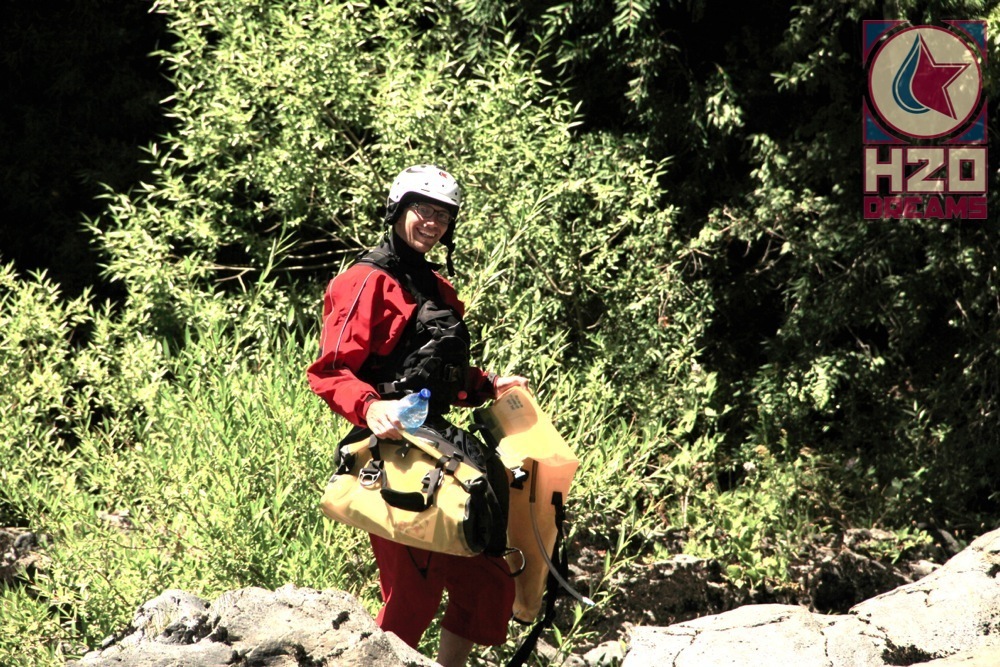We are a gear hungry sport with an insatiable thirst for what’s new and improved. I will be the first to agree that boat design and its outfitting have come a long way in terms of performance, safety, and comfort, but at what cost? Generally, it comes at a sacrifice of weight to accommodate what I believe was consumer demanded:folks wanted the comfort and the accessories as well as the indestructible boat with the 15-year warranty. Well, guess what? That all requires a bit of weight to accommodate.
I’ll be the first to admit that some of these features are down right nifty and help with the overall longevity of a boat (extra plastic in the shot weight), and the safety aspect of a heavy duty step-out pillar mounted through the wall of the kayak cannot be overstated (check this article out here on the safety feature of weight). However, some of the weight is there for our creature comforts and, in part, due to an inability to innovate on our own. Don’t take offense; our lives have been filled with more stuff in the same amount of time over the years, creating noise and distraction. What I suggest is putting down the Facebook phone for a moment and getting creative in understanding and adjusting how your boat is outfitted, as well as paring down to the essentials for what you carry in order to save on the weight. Almost every boat I owned has been stripped and rebuilt to my personal standards.

I think it is important to note that your energy is a resource on the river to help you complete the day, deal with the adversities thrown at you, and do the work necessary to avoid incidents on and off the water. Imagine a day where you were the most tired you’ve ever been, and ask yourself why. Then ask yourself if you would have had the energy to respond to an incident on the river should one have occurred. Now you are starting to get the picture of how important your personal energy level is to your personal well being in addition to your group needs. Energy is essential to safety, and ways to conserve and maximize your energy throughout the day are integral to prevention.
[st_video video=”https://youtu.be/aneQZh3m7YQ” ratio=”16:9″ width=”” height=””]
The video above illustrates a day that we needed to be out of our boats just as much as in our boats for safety and to proceed downstream as cautiously as possible. For me, this is part of the fun and where true adventure lies.
Below, I share a few things that I have done to help me carry the weight of what I need throughout the day as well as conserve my energy for the ‘just-in-case.’
- Train to carry the weight. You bought it knowing that it could be heavy. You packed the extra frills that you didn’t think you would need to carry. You didn’t anticipate that it require actual work. It’s important to note that you signed up for an “adventure sport” so anticipate some adventure and realize that this takes some actual WORK! Don’t get me wrong; you can still get by at the Nanty dragging your boat from the car to the river in a few hundred feet, but realize some of the places you go will require some serious fitness to portage, rescue, etc. Be prepared and train for it! Hiking with your boat on easier runs, doing laps at your favorite rapid, basically getting off of your butt when you are not required to are great ways to prepare yourself for when you have to.
- Try to avoid packing heavy stuff in your stern. When you carry the boat, the more weight you displace away from your body or the center of the boat, the heavier it feels. This is the idea of swing-weight, where the further the weight is from the moment-of-inertia (center in a kayak) the harder it will be to spin or turn, and actually it applies to carrying the boat as well. I carry my pin kit in my PFD to not only keep it handy, but so I don’t have the weight in my boat. Likewise, water bottles and throw ropes go between my legs. I try to pack the lightest gear in the bow or the stern. If you have too much stuff, re-evaluate what you are carrying? How often do you use it? Is there another item that can multi-task?
- Re-evaluate what you are carrying. This means exactly what it says. Do you need it? Is there something that can fill its role and another? Are you still carrying the things you should be carrying just in case?
- Time to take a hard look at the outfitting. I have gone as far as removing all moving parts and heavy pieces in many of my boats and replaced them with mini-cell foam, simpler solutions, or did away with them altogether. There are some things I really like that that the manufacturer did and just try to find ways to lighten them. This makes a big difference for me when I am teaching and carrying loads daily and saves my body in the long-term.
So now that I have shared a few of my ideas, leave some comments below with photos letting me and others know how you got creative with the weight!



